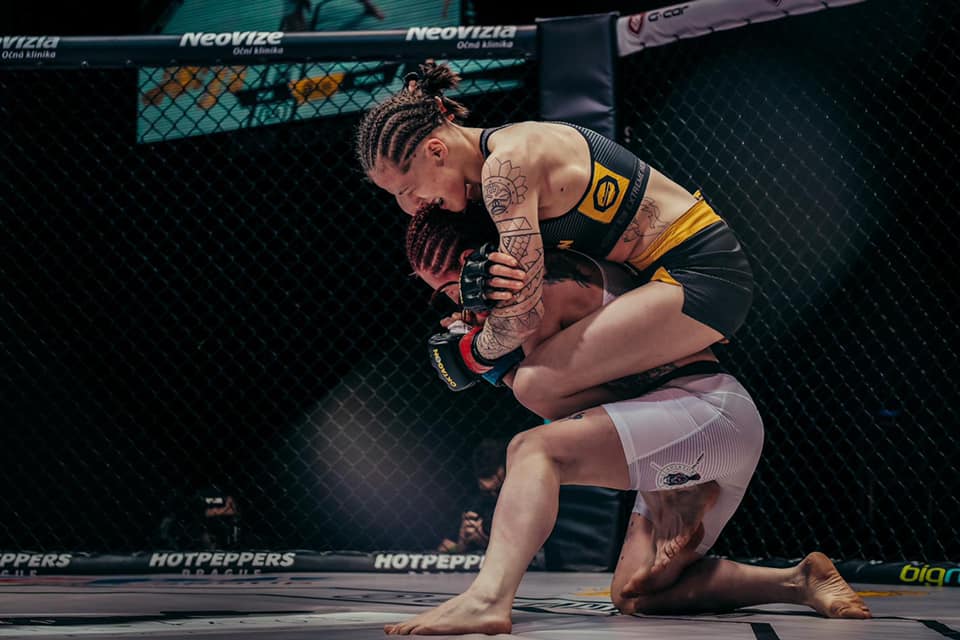MMA
The history of women’s MMA: Discrimination and bizarre rules. Even UFC boss Dana White refused women’s fights
Women’s MMA still has its critics, but it is no longer something unique, unique and taboo. However, it has undergone an interesting evolution. Women’s fights have had bizarre rules in the past, even the head of the UFC has resisted them. What is the history of women’s MMA?

Women’s MMA still has its critics, but it is no longer something unique, unique and taboo. However, it has undergone an interesting evolution. Women’s fights have had bizarre rules in the past, even the head of the UFC has resisted them. What is the history of women’s MMA?
The first mentions of women’s MMA
MMA itself has gone through a long period of development. It more or less came about because someone wanted to find out which combat sport was the best. There was no weight classes. So in the early days we saw some bizarre moments from today’s perspective. However, the spotlight has always been on the men.
But women also wanted to make a name for themselves in the sport. But it wasn’t easy. Just like in other sports. They faced discrimination and nonsensical bans. That’s why it’s not clear when the first women’s MMA fight took place, but the first MMA tournament with a women’s fight on the card was recorded in 1995 in Japan.
Two years after that, women’s MMA also made its way to the US, and by 2000 some organizations were starting to take women’s fights for granted. Specifically, these organizations included Smackgirl, HOOKnSHOOT and Shooto.
Special rules in women’s MMA
Women are referred to as the fairer sex that needs to be protected. For a not so short period of time, the organisations that organised women’s fights were also guided by this, which made the rules look different from men’s fights.
For example, the Japanese organization ReMix, later rebranded as the aforementioned Smackgirl organization, severely restricted ground fighting. It could only be fought on for 20 seconds. Under Smackgirl, the limit was increased by ten seconds. This was a precaution to prevent women from taking more damage to their beauty. The rule was only repealed in 2008.
The American organizations EliteXC and Strikeforce had shorter matches for women for a change. The former organization allowed women three-minute rounds, while Strikeforce only allowed two-minute rounds. However, this rule is now a thing of the past.
Some interesting rules somewhere are still in place today. In the UFC, for example, women are still not allowed to fight with makeup.
In addition, all female fighters must submit to a negative pregnancy test before every fight in the UFC. This is because the organization doesn’t want to allow any woman to enter the cage pregnant in ignorance.
Strikeforce pioneers
It can be said that the Western world determines everything important. That is, even the trends in MMA. And it was no different in the women’s one. It was the Strikeforce organization that was the real pioneer.
In August 2009, the organization was even the first ever major U.S. organization to select a women’s fight as the main event of a tournament. It was the first women’s title fight in a major organization, and it was catered by Cris “Cyborg” and Gina Carano.
Still, women’s matches were still taboo. Some fighters even refused to enter tournaments where women wrestled.
Moreover, in 2011, UFC boss Dana White responded to a reporter’s inquiry that we would never see women’s fights in the UFC. It didn’t take long before he had to admit that it was a stupid statement.
Women in the UFC
When White denied that the UFC would ever hold women’s fights, it was January 2011. However, back in March 2012, Ronda Rousey, one of the biggest pioneers of women’s MMA, signed with the UFC. It was the first ever women’s contract in the organization.
The UFC boss, however, did not mean his opinion in a sexist way. Rather, it was that the women’s scene at the time was extremely unbalanced.
The question then is how much of an impact the fact that Strikeforce fell under the UFC had on the staging of women’s fights.
Back in February 2013, Ronda Rousey defended the title she brought from Strikeforce against Liz Carmouche and won. She has more or less only fought in main event fights and has helped women’s MMA extremely.
Since then, the UFC has expanded the number of female fighters, several women’s fights have been highlights of unnumbered and numbered tournaments, several champions have been replaced, and there are currently four active weight classes, though there aren’t that many female fighters in the featherweight division.
In any case, it’s not just the fighters who dream of the UFC anymore, but the female fighters as well. There has already been one Czech woman in the organization, namely Lucie Pudilova. She could soon be followed by Tereza Bledá.
It is interesting to note that out of the ten biggest selling tournaments on PPV, in three cases the main attraction was women’s fights. Specifically, there were two Ronda Rousey fights, one of which was with the now legendary Amanda Nunes, who is still a UFC fighter. Like Rousey, Nunes was the main face of two of these three tournaments.
The women-only organization
However, if you’re a fan of all-female fights, there’s the Invicta FC organization for you. The latter hosted its first major tournament in 2012. The reason for its creation has to do with the UFC.
When the Strikeforce organization started to fall under the UFC, some female fighters were afraid for their future and their fight workload. That’s why they contacted a certain Shannon Knapp, who founded Invicta, to solve this problem.
To date, Invicta FC has hosted 45 major numbered tournaments. The organization has already featured Czech fighter Magda Šormová, who has also fought in the Octagon and now fights in KSW in Poland.
The Czechoslovak scene
The Czechoslovak MMA scene has so far known mainly two big organizations, first of all XFN, which is already a thing of the past, and Oktagon, which is still growing. The question is how the new RFA organization will catch on.
However, female fighters were here before these organizations. They fought abroad and made a good name for themselves. Both XFN and Oktagon, however, did not shy away from female fights, quite the opposite.
Oktagon had women’s wrestling in their very first tournament, even already having their first champion in Tereza Bleda. She was even a part of the first women’s main event in the history of the organization.
In addition, the Czechoslovak number one organization supported women’s MMA with two interesting projects. First of all, it has already done one all-female reality show, Oktagon Challenge, which helped shape the organization, or Project Y, where women who have never fought before could try to make it big.
Moreover, promoter Ondřej Novotný speaks very positively about women’s wrestling, promotes it well and takes it really seriously.
Source: MMA Sucka, UFC, The Things










